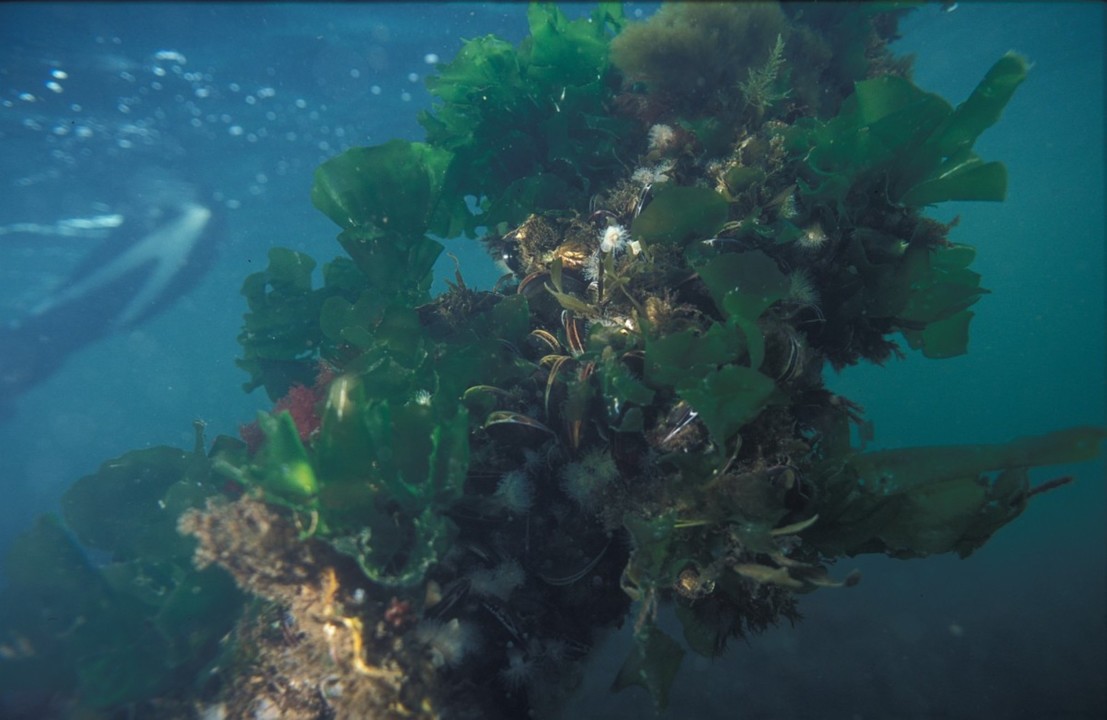
DO YOU KNOW?-Sea Lettuce – Ulva lactuca
Scientific Classification
- Phylum : Chlorophyta
- Class : Ulvophyceae
- Order : Ulvales
- Family : Ulvaceae
- Genus : Ulva
- Species : Ulva lactuca (Linnaeus, 1753)
Common Names : Sea Lettuce
Irish – Glasán
Distribution :
Sea Lettuce – Ulva lactuca is a green seaweed / algae found worldwide. It is found on sheltered to moderately exposed rocks and shores, and in pools and shallow waters near the low watermark. It thrives in brackish waters, particularly in waters with organic enrichment. It is fairly common along the Irish Shoreline, but particularly on sheltered or moderately exposed shores.
Description :
The Genus Ulva which Sea Lettuce – Ulva lactuca belongs to is a very large genus of marine and brackish green seaweed / algae. It is a thin flat green seaweed, growing only 2 cell layers thick. The Sea Lettuce – Ulva lactuca plants grow attached, without a stipe, to rocks, other seaweeds and various substrates, by a disc shaped holdfast. The fronds within the water resemble lettuce leaves, hence the name Sea Lettuce. Plants tend to be pale green when young, bright green when mature and dark green when old.
Sea Lettuce – Ulva lactuca can be up to 45cm long and 30cm across.
Uses :
Sea Lettuce – Ulva lactucafor use in cooking, soups, with meats and fish, and salads.
Sea Lettuce – Ulva lactuca can be easily torn from the substratum and can easily accumulate in large drifting masses. It has been reported that due to these large drifting masses, various uses of Ulva species have been looked in to – including using to make paper and fertilizer. In Brazil, coastal farmers, use Ulva and other seaweed species, washed up, as a manure for their crops.
Sea Lettuce – Ulva lactuca in the News
With Ulva species and other green seaweed / algae (Entermorpha species) “blooming” under certain environmental conditions, they often hit the headlines – due to vast amounts of algae produced.
In 2009, a bloom of Ulva species hit the headlines as vast quantities of the seaweed were washed up on the shores of Brittany, France. The rotting seaweeds, as with any rotting plant material, produced noxious gases. It was these gases that rendered a horse rider unconscious and killed his horse. On the same beach, and in a separate incident, a man and several children died while taking part in the clean up the green algae, as they were not wearing protection. This bloom was blamed on excessive use of fertilizers and run off from the surrounding farming land.
Like any plant / organism, if conditions are right, reproduction can occur on a massive scale.
We have always been careful where we harvest our Sea Lettuce from. Making sure that the surrounding area is clean and has a great tidal exchange and fast current.
Best regards,
Dora (Ms)
--------------------------------------------------
GIA GIA NGUYEN CO., LTD
107 Chu Van An Hostel, Ward 26, Binh Thanh Dist, HCMC, Vietnam
Tel. +84-28-62947953 - Fax. +84-8-62947954
Email: Dora@vietnambionmass.com
Skype: Fpsales6
Cell phone/WhatsApp :(+84) 899 514 378
Group & Team development specialist, Sustainable process & product development, Identity, Experiential education @Avans
6yWat valt er toch veel te leren over zeewier Internationaal. Deze ulva ofwel zeesla groei ook in Nederland. Studiereis naar Vietnam?. Ik heb tussen de 2 en 5 studenten die mee kunnen vanuit de studie Biobased TeCh, thema Bioraffinage bij ATGM Avans Breda.